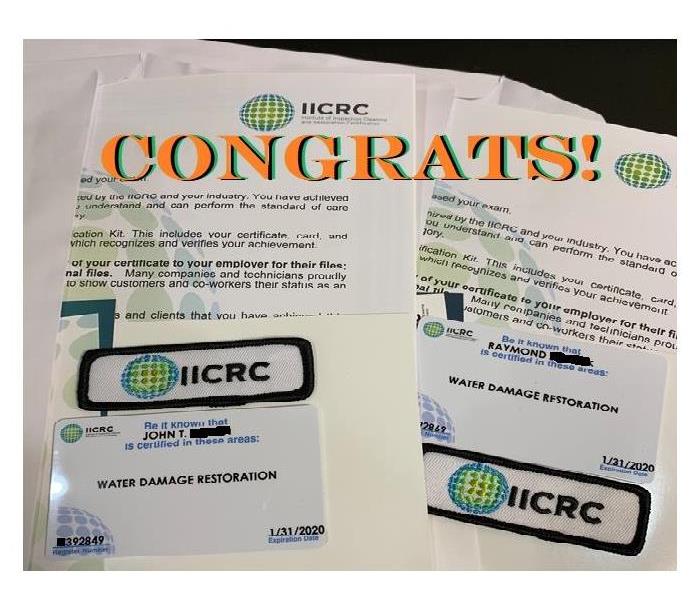IICRC Categories and Classes
3/4/2019 (Permalink)
When you call to report a water loss in your business or home wouldn't it be nice to be able to give the person on the other end an idea of the type of loss you are experiencing. The IICRC has set guidelines for restoration companies to follow as a standard. These standards tell us what can stay and what has to go. We are not making up our own rules, like in monopoly. We follow the guidelines set be a 3rd party, the IICRC.
Categories of water – This refers to the amount of contamination in the water.
Category 1 – Water originates from a sanitary source and does not pose substantial risk from dermal, ingestion, or inhalation exposure.
Category 2 – Water contains significant contamination and has the potential to cause discomfort or sickness if contacted or consumed by humans.
Category 3 – Water is grossly contaminated and can contain pathogenic, toxigenic, or other harmful agents.
Classes of water – This refers to how wet an area, room, or structure has become.
Class 1 (least amount of water absorption and evaporation load) – Water intrusion where wet, porous materials (e.g., carpet, gypsum board, fiber-fill insulation, concrete masonry unit (CMU), textiles) represent less than ~5% of the combined floor, wall, and ceiling surface area in the space and where materials described as low evaporation materials
(e.g., plaster, wood, concrete, masonry) or low evaporation assemblies (e.g., multilayer wallboard, multilayer subfloors, gym floors, or other complex, built-up assemblies) have absorbed minimal moisture.
Class 2 (significant amount of water absorption and evaporation load) – Water intrusion where wet, porous materials (e.g., carpet, gypsum board, fiber-fill insulation, concrete masonry unit (CMU), textiles) represent ~5% to ~40% of the combined floor, wall, and ceiling surface area in the space and where materials described as low evaporation materials (e.g., plaster, wood, concrete, masonry) or low evaporation assemblies (e.g., multilayer wallboard, multilayer subfloors, gym floors, or other complex, built-up assemblies) have absorbed minimal moisture.
Class 3 (greatest amount of water absorption and evaporation load) – Water intrusion where wet, porous materials (e.g., carpet, gypsum board, fiber-fill insulation, concrete masonry unit (CMU), textiles) represent more than ~40% of the combined floor, wall, and ceiling surface area in the space and where materials described as low evaporation materials (e.g., plaster, wood, concrete, masonry) or low evaporation assemblies (e.g., multilayer wallboard, multilayer subfloors, gym floors, or other complex, built-up assemblies) have absorbed minimal moisture.
Class 4 (deeply held or bound water) – Water intrusion that involves a significant amount of water absorption into low evaporation materials (e.g., plaster, wood, concrete, masonry) or low evaporation assemblies (e.g., multilayer wallboard, multilayer subfloors, gym floors, or other complex, built-up assemblies). Drying may require special methods, longer drying times, or substantial water vapor pressure differentials.
SERVPRO of Arlington Heights / Prospect Heights
847-637-3445






 24/7 Emergency Service
24/7 Emergency Service
